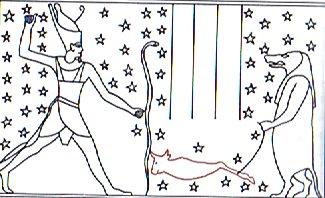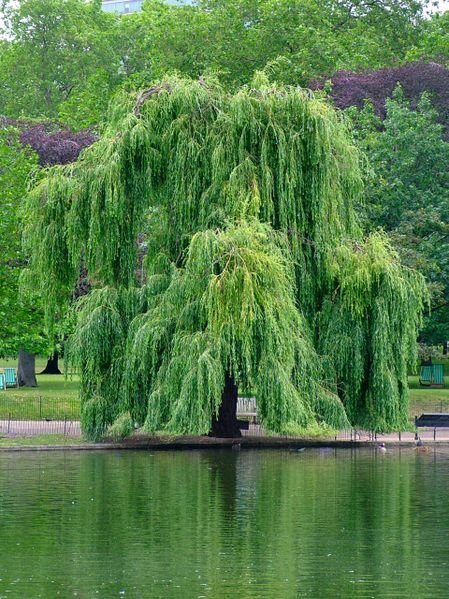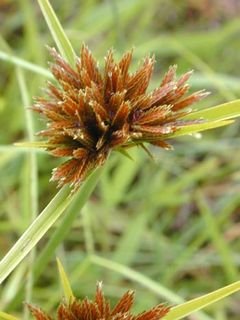|
TRANSLATIONS
In the 'Maui birth' structure he should stand at the extreme right of this period, i.e. he must be the right part of Pa5-72: His 4 elder brothers have names which tell us about their positions in the cycle of the year:
As Maui roto evidently stands in the middle (roto), he must be at midsummer (solstice), i.e. he is standing at the close of the 2nd quarter (not at the beginning, not in the middle of the 2nd quarter). The other brothers, therefore, must also be standing at the end of their periods. This is affirmed by the name of Maui pae (the edge). The edge is here to be interpreted as the very last part of the year. So, if Maui tikitiki a Taranga is depicted among the glyphs above, he must be seen at the very last part of the sequence of glyphs - given of course that the glyphs follow parallel with time. The name Taranga, I think, is tara-ga, i.e. a construction reminiscent of kainga, kai-ga. Kai-ga means the place (-ga) where eating (kai) is located. The word kai maybe should be read as ká-i? Because ká, according to Vanaga, is used in this expression: Ana ká i te umu, he hahei hai rito i raro, when you cook food (lit.: light the oven) you cover it all around with banana leaves at the bottom. 'Banana leaves at the bottom' maybe indicates a male (fire) perspective, where bananas suggest the female (presumably because of the boat-like shape of a banana). Earlier I suggested that maika (banana) was related to Tuesday (the day of Mars, the red planet who travels as in a canoe across the sky). Red means newly born and the banana shape of the boat suggests his mother vessel. The new fire is protected by the 'banan leaves'. The Polynesian expressions stored in the dictionaries is a reach mine to explore. In the female perspective everything is turned upside down: the bottom becomes the top, and the fire will be in the topknot (as seen in Pa5-67). As to -i (in ká-i) we should remember Vakai (the pregnant wife of Hotu Matu'a): 'The final -i cannot be a preposition, therefore the probable explanation is that we should read -î, the meaning of which is explained by Vanaga as: Full; ku-î-á te kete i te kumara, the bag is full of sweet potatoes. 2. To abound, to be plentiful; ki î te îka i uta, as there are lots of fish on the beach. 3. To start crying (of a baby): i-űi-era te ma-tu'a ku-î-á te poki mo tagi, he-ma'u kihaho, when a mother saw that her baby was starting to cry she would take it outside. Vakai then becomes the 'canoe' which is full (of life) - like Noah's ark.' The great Tara is maybe the mother of the great Tama. The place of Tara is Taranga, whereas we find Tama at the seashore coloured red in the early dawn. Taranga presumably means the mother of the sun. She is located at the beginning of the X-area and another name for her is niu (the coconut palm). Trees are women. Taranga is the Sycomore Lady and she is named 'niu' by Metoro. The 'serpent' (Tuna) has made her pregnant (as we can see by the bulbous bottom part of GD18). Now we must introduce another grand concept and the best way to start is by way of The White Goddess: "The town of Eleusis, where the most famous mysteries of all took place, was said to be named after the Attic King Eleusis. Eleusis means 'Advent' and the word was adopted in the Christian mysteries to signify the arrival of the Divine Child; in English usage it comprises Christmas and the four preceding weeks. The mother of Eleusis was 'Daeira, daughter of Oceanus', 'the Wise One of the Sea', and was identified with Aphrodite, the Minoan Dove-goddess who rose from the sea at Paphos in Cyprus every year with her virginity renewed. King Eleusis was another name for the Corn-Dionysus, whose life-story was celebrated at the Great Mysteries, a Harvest Thanksgiving festival in late September; and his father was sometimes said to be Ogygia, or Ogyges, the Theban king in whose reign the great flood took place which engulfed the corn-lands of Boeotia." We observe with interest that 4 appears again. First 4 (regular) periods of waiting, then the 5th crucial period with new birth, a time for the female. Death is the other side of the coin. That is the task of the male. To make room for a new child someone has to die. We should remember the threatening figure in front of Snake, Taweret, the 'Thigh' of the bull, and the 3 vertical 'Beams':
The left part of Pa5-68 appears to show the same 3 vertical beams (probably to be read as sun beams):
The appendix, on the other hand, means 'darkness', but also strongly indicates 3. We should understand the 'beams' to belong to the dark time of the year. The 1st day time glyphs used similar types of beams:
Beams which are 'unfinished', i.e. have no short ends incised, are 'female'. Only in the (strong) daylight may definite limits be measured. To continue one step more with the Eleusinian Mysteries according to The White Goddess: "At an early stage of the yearly Eleusinian Mysteries the Divine Child, son of the Wise One who came from the Sea, was produced by mystagogues, dressed like shepherds, for the adoration of the celebrants. He was seated in a liknos, or osier [Weeping Willow] harvest-basket."
(picture from Wikipedia) "To judge from the corresponding myths of Moses, Taliesin, Llew Llaw, and Romulus, the mystagogues declared that they found him on the river bank where he had landed after sailing over the flood in this same havest-basket, caulked with sedge."
(Sedge - picture from Wikipedia: "The most distinctive feature which distinguishes members of the sedge family from grasses or rushes is that members of the sedge family have triangular stems...") "It will shortly be mentioned that the liknos was used not only as harvest-basket, manger and cradle, but also as winnowing sieve; the method was to shovel up the corn and chaff together while the wind was blowing strong and sieve them through the osiers; the chaff was blown away and the corn fell in a heap. The Mysteries probably originated as a winnowing feast, for they took place some weeks after the wheat-harvest, and at the time of the equinoctial winds." Baskets (nebet) we remember from the pictures showing Nut, e.g.:
Also in Nordic mythology we find them: "... But the Edda has another myth, which was alluded to in speaking of the stone in Thor's head. Groa is busy conning her magic spell, when Thorr, to requite her for the approaching cure, imparts the welcome news, that in coming from Jötunheim in the North he has carried her husband the bold Örvandill in a basket on his back, and he is sure to be home soon; he adds by way of token, that as Örvandil's toe had stuck out of the basket and got frozen, he broke it off and flung it at the sky, and made a star of it, which is called Örvandils-tâ. But Groa in her joy of the tidings forgot her spell so the stone in the god's head never got loose (Snorri's Skaldskap. 17)" (Hamlet's Mill) This story makes me wonder if the broken off toe means the difference between 365ź and 365. And then maybe we should interpret the toes that have disappeared in Pa5-71
in a similar way? The end of the body here evidently is represented by the toes. The night ride of the sun along the back of Nut (above) starts at the toes and ends at the fingers. The fingers announce that dawn is near. Just as we saw in the calendars of the night:
|









